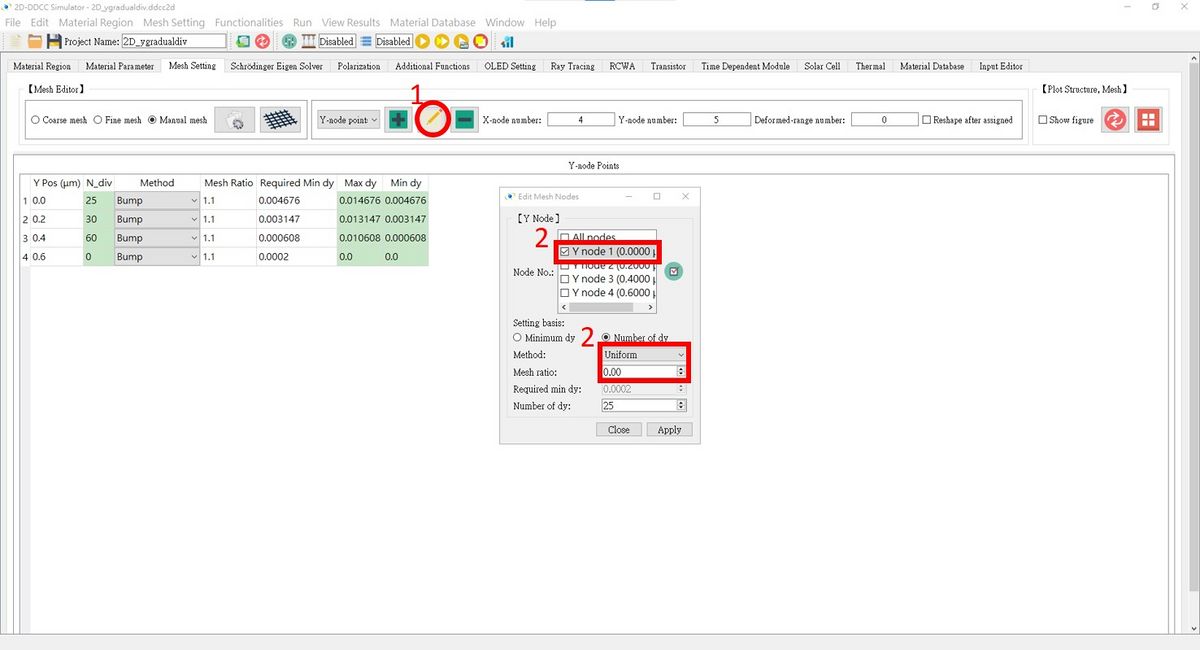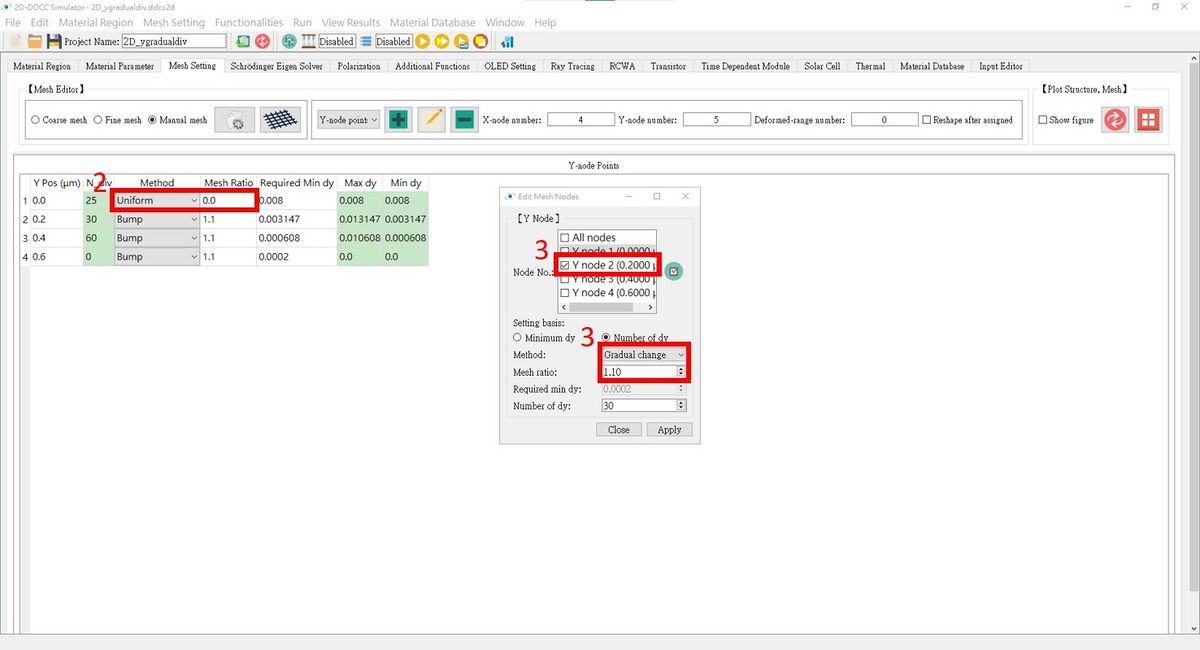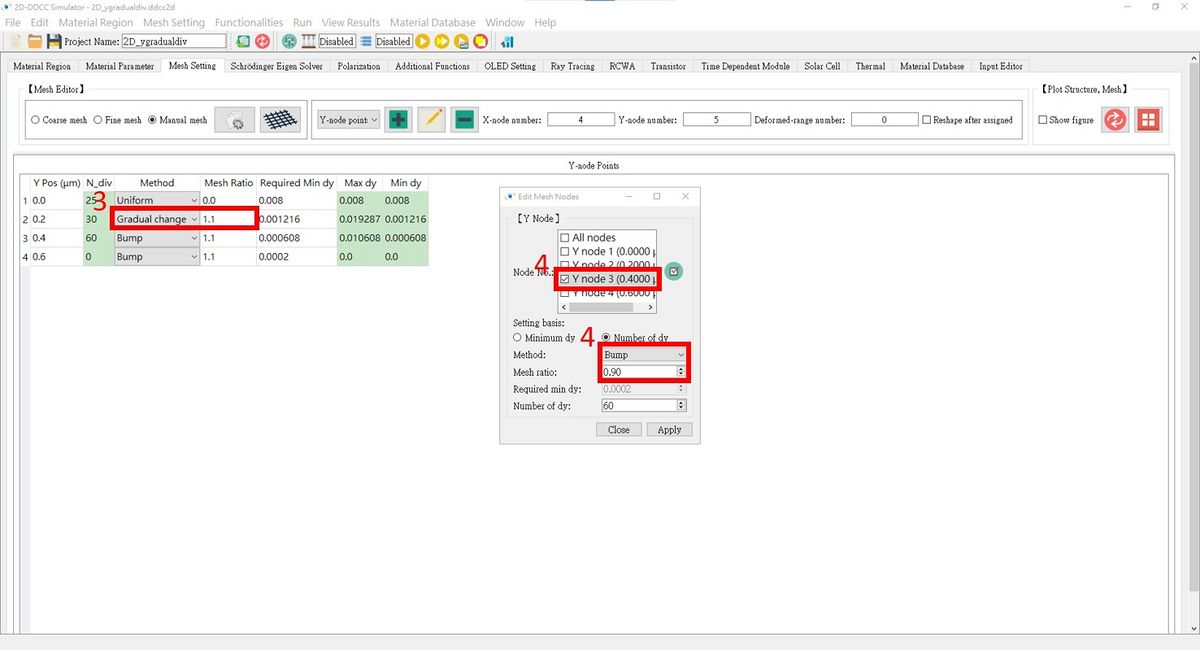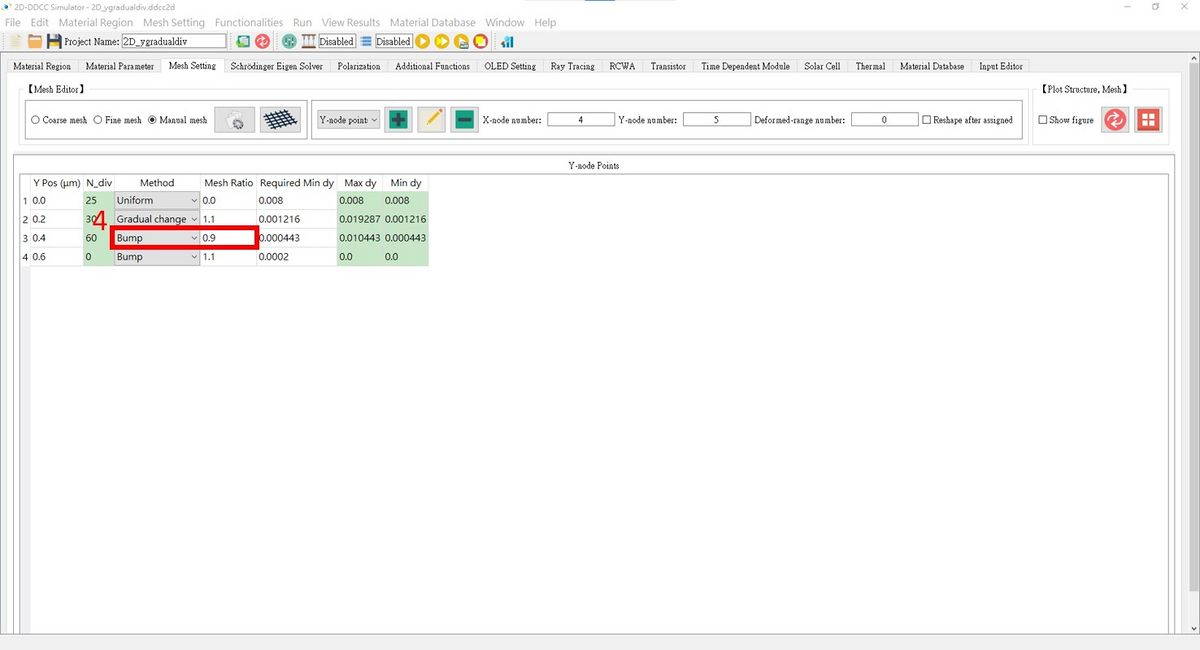「$ygradualdiv」:修訂間差異
跳至導覽
跳至搜尋
無編輯摘要 |
無編輯摘要 |
||
| (未顯示由 2 位使用者於中間所作的 12 次修訂) | |||
| 第12行: | 第12行: | ||
|} | |} | ||
The second column ''r'' should be filled in a real number. | The second column ''r'' should be filled in a real number. | ||
<br> | |||
[[File:Mesh2.png|600px]] | |||
<br> | |||
{| class="wikitable" | {| class="wikitable" | ||
|- | |- | ||
| 第43行: | 第43行: | ||
Then <math>l = a\frac{r^{N}-1}{r-1} </math> | Then <math>l = a\frac{r^{N}-1}{r-1} </math> | ||
<br> | |||
If the total layer thickness is <math>l </math> and i=2, then if the smallest separation distance is a | |||
<math>l/2 = a+ar+ar^{2}+ar^{3}+ar^{4}+...+ar^{N/2} </math> | |||
where N is the total grid number defined in [[$ydiv]] | |||
Then <math>l = 2 \cdot a\frac{r^{N/2}-1}{r-1} </math> | |||
<br> | <br> | ||
: Example | : Example | ||
$ynode | |||
0.0 | |||
0.5 | |||
2.0 | |||
3.0 | |||
$ydiv | |||
25 | |||
30 | |||
60 | |||
$ygradualdiv | |||
0 | |||
1 1.1 | |||
2 0.9 | |||
<br>'''<big><big>The $ygradualdiv setting in GUI interface is here</big></big>''' <br> | |||
1. After setting up the Y-nodes, press '''Edit the nodes'''.<br> | |||
2. Choose the 1<sup>st</sup> node and set the Method to '''Uniform''' with a Mesh ratio of 0.00.<br> | |||
[[檔案:2D_ygradualdiv_fig1.jpg|1200px]]<br><br> | |||
3. Choose the 2<sup>nd</sup> node and set the Method to '''Gradual change''' with a Mesh ratio of 1.10.<br> | |||
[[檔案:2D_ygradualdiv_fig2.jpg|1200px]]<br><br> | |||
4. Choose the 3<sup>rd</sup> node and set the Method to '''Bump''' with a Mesh ratio of 0.90.<br> | |||
[[檔案:2D_ygradualdiv_fig3.jpg|1200px]]<br><br> | |||
[[檔案:2D_ygradualdiv_fig4.jpg|1200px]] | |||
<br><br> | <br><br> | ||
: Related commands | : Related commands | ||
:; [[$xgradualdiv]] | :; [[$xgradualdiv]],[[$ynode]],[[$ydiv]] | ||
於 2024年10月21日 (一) 09:42 的最新修訂
This function is to determine how the segment is divided. There are two columns to fill in. The first column i should be filled in an integer 0, 1, or 2.
i = 0: Uniform. This means the segment is divided equally with the same spacing. i = 1: Gradual. This means the segment is divided whether from small spacing to large spacing or in the opposite way. The spacing is distributed like a geometric progression i = 2: Bump. This means the segment can be divided into two forms small-large-small or large-small-large.
The second column r should be filled in a real number.

| If r < 1 | If r = 1 | If r > 1 | |
|---|---|---|---|
| Uniform (0) | uniform | uniform | uniform |
| Gradual (1) | large -> small | uniform | small -> large |
| Bump (2) | large -> small -> large | uniform | small -> large -> small |
If the total layer thickness is and i=1, then if the smallest separation distance is a where N is the total grid number defined in $ydiv Then
If the total layer thickness is and i=2, then if the smallest separation distance is a where N is the total grid number defined in $ydiv Then
- Example
$ynode 0.0 0.5 2.0 3.0
$ydiv 25 30 60
$ygradualdiv 0 1 1.1 2 0.9
The $ygradualdiv setting in GUI interface is here
1. After setting up the Y-nodes, press Edit the nodes.
2. Choose the 1st node and set the Method to Uniform with a Mesh ratio of 0.00.

3. Choose the 2nd node and set the Method to Gradual change with a Mesh ratio of 1.10.

4. Choose the 3rd node and set the Method to Bump with a Mesh ratio of 0.90.


- Related commands